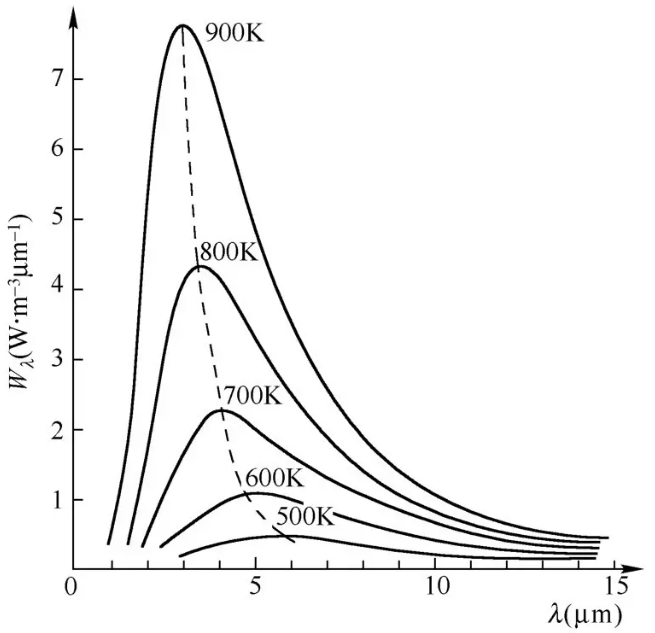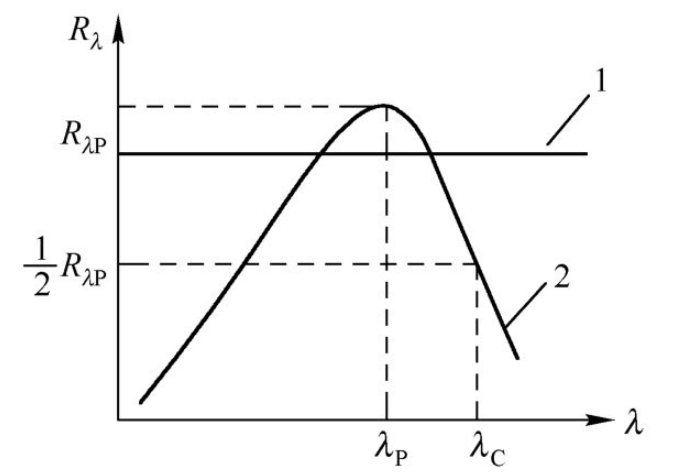Infrared Sensors and Applications
Sep. 23, 2023
Infrared and its properties
Infrared light, also known as infrared light or infrared radiation, is an electromagnetic wave.
electromagnetic spectrum
All the characteristics of visible light, infrared light also have, that is, infrared light is also according to the straight line forward, also obey the law of reflection and refraction law, also have interference, diffraction and polarization and other phenomena.
The most important characteristic of infrared light is that it has a photothermal effect and can radiate thermal energy; it is the largest photothermal effect region in the spectrum. In nature, the temperature of any object will be in a hot state as long as it is above absolute zero. Molecules and atoms in the hot state of matter constantly vibrate, rotate and electron jumps, thus generating electromagnetic waves. The wavelengths of these electromagnetic waves are outside the red of visible light and are therefore called "infrared". When an object is out of balance with its surrounding temperature, it emits or absorbs infrared radiation, which is often referred to as thermal radiation. The intensity and wavelength distribution of infrared radiation from an object depends on the temperature and emissivity of the object.
From the figure, it can be seen that when the temperature increases, the wavelength of the peak radiation moves towards the short-wave direction, while when the temperature is not high, the wavelength of the peak radiation is located in the infrared region. It can also be seen that when the temperature increases, the radiation amplitude grows with an exponential law. The highest point of the curve corresponds to the left side of the wavelength λmax, i.e., about 25% of the radiant energy in the short-wavelength band, and the remaining 75% of the radiant energy is located in the region to the right of λ.

When infrared light propagates through a medium, it is attenuated due to absorption and scattering by the medium. Various gases and liquids for different wavelengths of infrared radiation absorption is selective, that is, different gases or liquids can only absorb a certain wavelength or a few wavelength range of infrared radiation energy, which is the use of infrared for compositional analysis of one of the basis.
One issue to consider when applying infrared technology is the effect of the atmosphere on infrared radiation. All infrared radiation from objects takes place in the atmosphere. The atmosphere has different penetration levels for different wavelengths of infrared radiation because some molecules in the atmosphere, such as water vapor, carbon dioxide, ozone, methane, carbon monoxide and water, absorb infrared radiation to varying degrees.Throughout the infrared band, the atmosphere has a better transmission effect for certain wavelengths of radiation. Experiments have shown that the atmosphere has a better transmittance effect on infrared radiation of 1~2.5μm, 3~5μm and 8~14μm.
Light-sensitive infrared detector
Photosensitive infrared detectors can be either electro-vacuum devices (phototubes, photomultiplier tubes) or semiconductor devices. Their main performance requirements are high responsivity, low noise and fast response.
Semiconductor-type photosensitive infrared detectors can be divided into photoconductive, photovoltaic, photomagnetic, as well as infrared field effect detectors, infrared multi-array detectors and so on.
Photoconductive infrared detectors are photosensitive devices based on the photoelectric effect and are usually made of semiconductor materials such as lead sulfide and lead selenide.
Photovoltaic type infrared detectors are semiconductor devices based on the photovoltaic effect. Photovoltaic infrared detectors have a detection rate equal to that of photoconductive infrared detectors, while the response time is much shorter, thus expanding the range of use.
Photomagnetic infrared detectors work by utilizing the electromagnetic effect of certain materials. The so-called photomagnetic effect is a physical effect in which the diffusive motion of photogenerated carriers is deflected by a magnetic field.
The wavelength range of the photosensitive infrared detector is generally unchanged, the response rate of its corresponding wavelength has a peak λp, more than λp when the response curve is rapidly cut off, as shown in the figure, the reason for this is that beyond a certain wavelength range, the photon reserve is insufficient for the excitation of the release of electrons, the disappearance of electrical activity. Since the photosensitive infrared detector is a photon as a unit of action, so it is also known as a photon detector. Photodetectors must operate at low temperatures.

Compared to photosensitive infrared detectors, thermal infrared detectors have lower response speeds and longer response times, on the order of 10-3s, but have a broad, relatively flat spectral response that extends over the entire infrared region. In addition, no matter what wavelength of infrared radiation, as long as the power is the same, their heating effect on the object is also the same, so thermal infrared detectors still have quite a wide range of applications.
Thermal infrared detectors are divided into room temperature infrared detectors and low temperature infrared detectors, the former do not need to be cooled during operation and are easy to use. Thermistors and thermopiles can be used as room temperature infrared detectors. Among them, thermistor type infrared detectors are widely used in industry. When the thermistor is working, the temperature firstly rises due to radiation exposure, and then its resistance value is changed due to the rise in temperature. Because there is a thermal equilibrium process, it tends to have a large thermal inertia. In order to reduce the thermal inertia, the thermistor is always made into a thin sheet and coated with a black coating that absorbs 100% of the incident radiation.
The general requirements for IR detector performance are:
1. High sensitivity
2. High detection rate in the operating wavelength range
3. small time constant
Infrared Sensor Applications
Radiation thermometer
Infrared temperature measurement
Infrared thermal imaging
Since infrared light is invisible to the human eye, it is not possible to take infrared thermal images using ordinary camera principles. Infrared thermography is a technology that converts infrared radiation into visible light for display.The electrical signal converted by the infrared detector is processed by the signal processor and sent to the display. Currently most of the cathode ray tube as a display to obtain infrared thermal images. Most modern thermal imaging cameras are equipped with a computer system to analyze and process the thermal image, so that the thermal image can also be stored and printed out.
Infrared cameras and infrared thermography have gained a wide range of applications in industry. Infrared thermography is commonly used for temperature detection under different environmental conditions, such as in machine work due to temperature rise on the parts of the thermal deformation detection.
Thermal imaging is also widely used for non-destructive defect detection. It allows easy detection of defects such as cracks, pores, impurities, cross-section variations, etc. in different materials such as metals, ceramics, plastics, multilayer fiberboards, etc.In the power industry, thermal imagers are used to check the temperature rise of power equipment, especially switches, cable lines, etc., so that faults can be detected and alarmed in time. In the petroleum, chemical and metallurgical industries, thermal imaging cameras are also used for safety monitoring. Since the temperature of many equipment in the production lines of these industries is higher than the ambient temperature, infrared cameras can be used to correctly obtain information about the changes in heating furnaces, refractory materials, insulation materials, and so on. In addition, they can provide information on deposits, blockages, heat leaks and corrosion of pipes, thus providing conditions for maintenance and safety.
Another very effective application of thermal imaging is in clinical medical diagnostics. The human body has a certain body temperature and it also exchanges heat with the outside world in the form of radiation. There are three main ways in which heat inside the body is dissipated through the skin: evaporation, convection and radiation. In addition, due to the different structures of the various parts of the human body and the distribution of organs in the body in different locations, so the temperature distribution of the various parts of the human body surface is different, and may be affected by the influence of many factors and changes. External factors include temperature, humidity, air pressure, ventilation, radiation, etc. Internal factors include nerve reflexes, emotional fluctuations, physical compression, changes in local blood flow, tissue heating, and uneven heat transfer.
When pathological changes occur in the body's near body surface and other tissues, they cause many internal factors to change, resulting in changes in body temperature and body surface temperature, which leads to changes in the energy of infrared heat radiation from the body surface. Medical infrared thermography can be used to obtain an infrared thermogram of the diseased area, and by analyzing the temperature information reflected in the thermogram, a diagnosis of the disease can be made.
CLZ Optical Co., Ltd. has been manufacturing and trading optical lenses for many years such as optical domes, optical windows, optical prisms, spherical and cylindrical lenses and so on, we also could provide OEM service, use many kinds of material substrates, optical glass N-BK7, HK9L etc.,Including fluoride materials for infrared technology, CaF2, MgF2 ect. Please contact us if you have any needs!


















